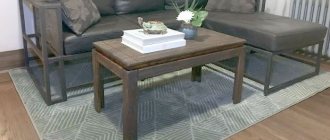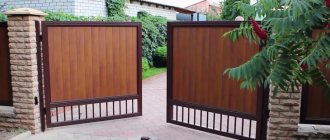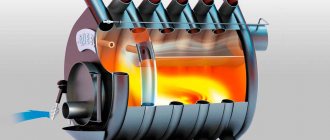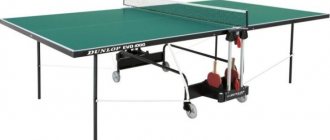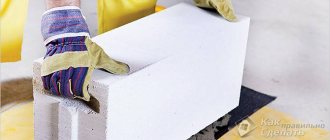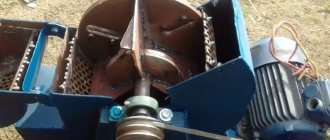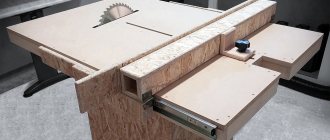The construction of greenhouses and sheds, the laying of utilities - all this requires a bent metal profile. But buying pipes bent to order is expensive, and purchasing a ready-made pipe bender is also not a cheap pleasure. So modern craftsmen use devices and self-made mechanisms to create metal arcs of the required radius.
In this article we will consider the following questions:
- Types of homemade pipe benders and their features.
- The design of the simplest device for bending square pipes.
- Design of a three-roll machine for bending round and square pipes.
- Technology for bending pipes using a three-roll homemade pipe bender.
Character traits
At its core, this is a mechanical device (installation) that bends a straight profile to the desired radius, from 1 to 180 degrees. Suitable for both metal (aluminium, steel) and plastic elements.
Factory equipment is standard, but it assumes you have experience with it. Therefore, it’s worth making a pipe bender for a professional pipe with your own hands, if only because you don’t have to get used to it. You will know exactly all the features of its design and understand what loads its elements will withstand.
Required Tools
To assemble a pipe bender, you need at least the following tools:
- welding inverter;
- angle grinder;
- lathe (or purchase of finished parts);
- vice;
- hammer;
- metal file;
- sandpaper;
- ruler;
- drill.
But the most important thing is the pipe bender drawings. The mechanism must be manufactured strictly according to the drawing. You can take a ready-made drawing from this material or find another one and adapt it to the required dimensions.
But it is impossible to make a pipe bender without a drawing, since precise calculations are needed to ensure the operation of the mechanical parts.
Device options
If you make it yourself, your hands are free. For example, nothing prevents you from implementing a lever-type installation so that the force is concentrated at a certain point, making it easier to ensure the desired radius of curvature. This configuration allows you to create templates that can be easily removed and replaced with others. Let there be 2–3 of them - for rolled products of different diameters.
The mechanism can also be crossbow or drone, that is, as compact as possible, designed for short sections of pipes. It will be very convenient during installation, when laying communications, in confined spaces.
Operating principle of a pipe bender
The nature of the action may differ slightly depending on the design, but in general it comes down to the following:
- Securely fix the selected profile in the device.
- You bend it at the desired angle using the method provided for this - by rolling, rolling, heating at a certain point until it acquires plasticity, using a template.
The metal product passes through movable shafts, and its geometry changes due to the force applied by the pressure roller. If the radius of curvature is not large enough, you will need to make another pass, although from the point of view of labor productivity, it is better if the result is achieved the first time.
The quality of the mechanism is determined by how much it deforms the material in the area of influence, as well as its versatility. The more diameters and sizes it supports, the more convenient it is.
In this regard, several types of these devices are distinguished - according to two key characteristics, which we now move on to consider.
Useful tips
The question of how to bend a profile pipe as accurately as possible and without unnecessary labor costs will be answered by several useful tips from qualified specialists.
Removable rollers of different shapes will allow you to comfortably work not only with profile pipes, but also with round ones.
- In manual pipe benders for bending profile pipes, you can not use sprockets, but assemble a structure based on one drive roller. Instead of a pressure screw, such pipe benders often use a jack.
- If you are bending according to a template, then to prevent the pipe from sliding off it, you can use metal hooks as stops.
- If you need to bend a profile pipe under a large radius, it is best to use a pipe bender with three rollers.
- To get a more versatile bending machine, you can make its thrust rollers movable. This way you can change the bend radius of the pipe.
In the video below, the master shares his experience in building a pipe bender from scrap materials.
In order to strictly observe the dimensions of the required pipe bend, it is best to perform this operation using a template made of wood. Even the simplest manual pipe bender using such a template will allow you to bend a profile pipe with precise compliance with the specified parameters. By the way, such templates are mainly made for the implementation of the simplest manual bending methods.
More on the topic: Do-it-yourself pipe bender (for a round pipe) - drawings, videos, photos
Classification by drive type
The motor is equipped with quite powerful models, which, in the factory version, are actively used in production. But such equipment can also be assembled personally (based on drawings and diagrams) for subsequent use in a home workshop. Essentially, you will get a machine that looks like this:
- Hydraulic – stationary, powerful, designed for diameters from 3 inches. It is best suited for industrial facilities, as it allows for large-scale work to be carried out with a high degree of productivity.
- Electromechanical is a good choice for bending main elements. It is convenient because it can be used to calculate with maximum accuracy both the optimal clamping force and the required angle.
- Manual – focused on small sections and low intensity of use.
Frame design
Having decided on the center distance and the design of the rollers, you can mark the blank parts for the frame. Based on the experience of FORUMHOUSE users, it should be concluded that the strongest frames are made from steel channels (at least 80 mm wide). This material is easy to get, so you can safely take note of it.
The photo shows the machine at the manufacturing stage. And here is the drawing that is taken as a basis.
Person User FORUMHOUSE
During the work, some changes were made to the original drawings.
The presented drawing is not a mandatory guide to action, but provides an objective understanding of how a rolling pipe bending machine works.
Classification by bending method
Based on the nature of the profile impact, the following types are distinguished:
- Segmental - pulls the workpiece through a series of rollers, each of which has its own effect and changes the geometry.
- Crossbow - its main element is a device that sharply moves forward, bending the fixed rolled product along the required radius.
- Spring - equipped with grips that straighten and bend the structures being held (if they are made of not the most durable material, for example, plastic).
When performing work, say, assembling a frame for a country greenhouse, you should not chase big corners. Remember, the more you deform the part, the more likely it is to break under load.
Well, now let's move on to the features of creating the simplest mechanisms.
How to make a profile pipe bender with your own hands, working according to a template
In this case, the guide elements are boards, the cross-section of which should be a couple of centimeters larger than that of rolled products.
- Securely fasten the selected wooden products to a durable metal base that can withstand even significant loads.
- Place a stop nearby on which the bent parts will subsequently be placed.
- Connect the winch so that you don’t have to make physical efforts when making the passage.
With this version of the device, it is not necessary to saw the boards to create bevels, gutter or slope, and this has a positive effect on the overall durability of the configuration. But limiters are needed in any case - so that the element being processed does not move out. It must be carefully inserted into the gap between the template and the stop, then gently press on its free end, setting the initial clamping force.
This option is good for its ease of implementation, but it does not always guarantee the accuracy of the curvature - the final radius may be several degrees less than required. Well, the guides are not universal - in fact, they are only suitable for one diameter. Therefore, it makes sense to look for other solutions.
“Snail”: we’ll make this rolling pipe bender with our own hands, with a drawing and diagrams
So named because of the specific shape of the spiral.
This machine is good for stamping large quantities of the same type of blanks. Even in the rack version, its dimensions are relatively small, so placing it on site is not a problem (even if it is a small home workshop). It's also easy to operate. Manufacturing takes place in several stages:
- You make the center - cut off a piece of round timber with a diameter of 38 mm and a thickness of 28 mm, and drill an eccentric hole of 8 mm in it. Using a grinder, remove excess metal to form a voluminous petal. After that, punch out a new seat on its radial surface - for an M10 thread.
- You form a spiral - from a steel strip 4 mm thick, according to the design, with such a shape of turns that you can subsequently provide any desired radius of curvature.
- Cut out the support plate - from a carbide sheet, 3 mm, not narrower, since it must withstand significant loads. Weld it to it.
- Attach the resulting functional unit to a metal stand that is strong enough, with a wall thickness of 3 mm or more. Fix it with bolts screwed into pre-drilled holes for this purpose.
- Weld the handle - on the reverse side, so that in the future it will be easier for you to remove and install the parts being processed.
The only disadvantage of the resulting mechanism is that it provides only small radii of curvature. If you try to greatly bend the workpiece on it, there is a chance that you will simply break it off.
Rental devices
At their core, these are also simple machines that create flexible pipes at any desired angle.
Their peculiarity is that the profile completely passes through their entire structure (hence the name). Otherwise, they do not differ from the standard ones: there is a base and shafts, with the driving ones providing broaching, and the movable one providing pressing force. And then, by the way, it’s time to look at what such equipment generally consists of.
Manufacturing of rollers
To make rollers, you should look for reliable materials that have already passed the strength test. Some use rotors from electric motors of old washing machines or kingpins from a KamAZ vehicle, others use carbon steel circles. In fact, there are many options, the main thing is not to forget that the chosen material must be strong enough. User Dva11, for example, used wheel hubs from an old sprinkler installation.
Dva11 FORUMHOUSE user
Hub diameter – 75 mm, length – 110 mm, bearings were selected according to the hub (205 fit). I had to buy 5 bearings and 1 pulley, and made the rest of the parts from scrap metal.
Smooth cylindrical shafts are a universal option. They are used to bend pipes of various sections. If the profile of the shafts is brought into line with the profile of the pipes being bent, the quality of bending will noticeably improve.
You can also use blanks designed for different profiles of bent workpieces.
Ideally, removable nozzles or ring clamps (limiters) are installed on the shafts, with the help of which the profile of the rollers is adjusted to the width of the pipe.
rusi45 FORUMHOUSE user
I made some improvements to the design of the rollers: I made attachments for the pipe on the outer shafts, where the stops are located. Tests were carried out on a 1 inch pipe. The attachments are easy to replace. To do this, I made one side of the bearings sliding. The nozzle is made of steel 65G (plus hardening). There is virtually no wear, and the file does not take hardness.
The internal radius of the roller or nozzle for a round pipe should be made with a margin: the radius of the pipe plus 1-2 mm. For example, if the pipe diameter is 24 mm, then the internal radius of the roller will be 13-14 mm. Only in this case the pipe will not jam during rolling.
This is the size we are talking about.
If a pressure roller designed for bending rectangular pipes has a slight convexity in the middle, this will help maintain the geometry of the profile being bent. The roller will press the upper wall of the pipe inward, preventing the workpiece from spreading out to the sides.
Do-it-yourself pipe bender for profiles: drawings and process
To make a relatively simple machine you will need:
- several sections of channel (or similar structures) and a steel shelf;
- high strength springs;
- 3 bodies of revolution;
- drive chain.
Yes, some more elements will be required, but these are components, and therefore they can not be highlighted separately, but only mentioned when they become relevant.
Having prepared everything you need, you need to do the following:
- Weld metal structures and fasten them together into a stable frame.
- Place the axle (steel plate) and shafts on it - two higher, one lower; the greater the difference in level between them, the wider the maximum radius of curvature.
- Equip the chain drive - equip it with three gears and pull it between the rollers.
- Provide a handle - attach it to the nearest body of rotation, it is with its help that, by applying physical effort, you can create torque and set the entire mechanism in motion.
Instructions for making a simple electric pipe bender for a profile pipe with your own hands
The list of required elements and the procedure are slightly different here. So:
- Make the base from a piece or corner 3–4 mm thick, with a hole (3 m from the end) for the axis.
- Place the feed shaft with a pulley at one end on the frame and connect it to the motor rotor with a belt drive. On the other side, secure the drive sprocket.
- Next, install the second roller, the top one, with the driven gear.
- Mount the pin and screw the lock into it.
- Place the third roller, this time the bottom one, so that together they form a triangle, promoting better deformation. You limit its movement by welding a U-shaped fork on the side.
- Assemble the device by tightening the stationary pulley with the handle.
The advantage of such equipment is the speed of operation, as well as the absence of flattening and creases and, finally, a minimum number of joints.
We make a hydraulic pipe bending machine with our own hands for a profile pipe
The key feature of its configuration is a powerful jack, the lifting capacity of which should be more than 5 tons. Accordingly, its base must withstand significant loads. Equipment assembly is carried out in the following sequence:
- Make a frame from a channel - in the shape of a rectangle.
- Attach a metal plate to its bottom (lower plane), and a lifting mechanism with a drive handle to it, and secure it with bolts.
- Select the rollers so that they provide a tight grip on the rolled products and mount them at the same height in relation to each other.
- Install the shoe - below the rollers and exactly in the middle between them; the difference in height will determine the maximum rounding angle.
So you have made the simplest homemade pipe bender for a profile pipe with your own hands. To use it, just insert the workpiece, clamp both ends and use the jack. The hydraulics will act as a powerful pusher - the rising rod will apply such pressure to the area of curvature that it will be enough to cope with the hardest material. And as soon as the desired radius is reached, it is enough to slightly rotate the mechanism handle in the opposite direction and pull out the part of the required geometry.
The only negative is the relatively large weight of such equipment. Well, there is also the need to select rollers that provide a really tight girth.
Video description
The operation of an electric stationary profile bender is shown in the following video:
One of the main advantages of electric profile benders is the minimum physical effort of the master, even when performing a large amount of work. The only exception may be the installation of workpieces and the acceptance of curved parts.
Electrically driven pipe benders make it possible to produce bent metal products of high quality. Manufacturers produce models in which the bending angle is adjusted manually or using special programs. The second version of the equipment is equipped with a remote or built-in display. It is designed to monitor ongoing operations on an electric profile bending machine.
Advantages and disadvantages of manual pipe benders
These are relatively compact devices that have a certain degree of mobility even in the amateur version. They do not have heavy or large components, so they can be easily transported or even moved to another site. Due to their simple design, they are reliable and durable. They do not require a network connection and do not waste electricity. This is their undeniable advantage.
On the other hand, they do not cope well with thick metal walls or large diameters, and when working with them, significant physical effort must be applied. Therefore, they cannot provide high labor productivity. Yes, to solve one-time problems, for example, to update the frame of a greenhouse or gazebo at the start of the summer season, you can make a homemade manual pipe bender for a profile pipe with your own hands. But if you spend whole days in your personal workshop, then it’s better to spend money and make an electric or hydraulic model, since there’s nothing complicated in their design either.
Video description
See the video for operating features of a hydraulic pipe bender.
Hydraulic profile benders are also equipped with three grooves, but they allow you to work with pipes of a larger cross-section. Its maximum dimensions can be 60*30 mm. Moreover, most models are capable of bending square pipes with a maximum cross-sectional size of 40*40 mm. A hydraulic machine for bending profiled pipes also allows you to bend rods, strips and round pipes.
The presence of an engine braking device increases the ease of use of pipe bending equipment with hydraulics. It allows you to stop the machine if adjustments need to be made. After this, the process can be continued further using the same workpiece. In addition, machines of this type are variable units. In other words, the devices can be manual, semi-automatic and fully automatic devices for bending corrugated steel pipes.
Bending methods
In practice, it is necessary to partially round workpieces made of a wide variety of materials, from carbide to relatively soft plastics. To prevent cracks, ruptures and other critical defects, depending on the case, one of two fundamentally different methods is used. Let's look at both.
Cold
Work is carried out without preheating the part.
This implies a low level of fusibility, and therefore a small change in angle. But the likelihood of a split or other damage occurring is minimal. The method is suitable for all rolled products, including metal ones, but to improve the result it is necessary to fill their cavity with salt or sand before pulling it through a mechanism with an electric drive or a jack.
Hot
Designed for particularly strong and rigid elements, for thick walls and large diameters.
According to it, you need to heat the area at the point of curvature until the material becomes pliable and plastic (the same steel, for example, becomes red-hot). The impact is targeted, and therefore the method is not too inferior to the previous one in terms of efficiency. But when implementing it, it is important not to overdo it and not to burn a hole in the rolled product.
Briefly about the main thing
A modern bending machine for profiled pipes is a compact, portable or stationary equipment that allows you to bend rolled metal pipes with square, rectangular and other cross-sections. It is used by large and small manufacturing enterprises that produce metal structures from corrugated pipes. Manufacturers produce equipment with manual, hydraulic and electric drive. Profile benders are also classified according to the method of influencing the metal workpiece. Pipe benders can carry out rolling, winding or rolling of profiled metal products.
Operating rules
When using the mechanism, do not allow it to fall or be struck.- Be sure to protect it from moisture and precipitation.
- During operation, all its rotating elements must be closed or at least located at a safe distance from others.
- Make sure that fingers, clothing, and foreign objects do not get between the shafts.
Do-it-yourself home pipe bender for a profile pipe: photos of self-made models
What types of profile pipes are there?
When talking about profile pipes, we mainly mean square, oval or rectangular products. As for the production method, they can be suture or seamless, with or without tempering. Tempering is a special procedure that results in the removal of internal stresses after the profile has been formed.
In general, we can say that the range of profile pipes is so diverse that several GOSTs were required to standardize it. For example, square-type profile pipes are determined by GOST 8639-82.
These regulatory documents contain instructions on the parameters by which thin-walled and thick-walled profile pipes are manufactured. The upper overall feature for them is the size of 180x180 mm, with a wall thickness of 8-14 mm. The smallest profile pipe is a square product of millimeter thickness, with a side size of 10 mm. From these values, the technology by which this rolled product is subjected to longitudinal deformation was determined.
A hollow beam measuring 18x18 cm, where the wall thickness reaches 1.5 cm, can only be bent using special equipment.
